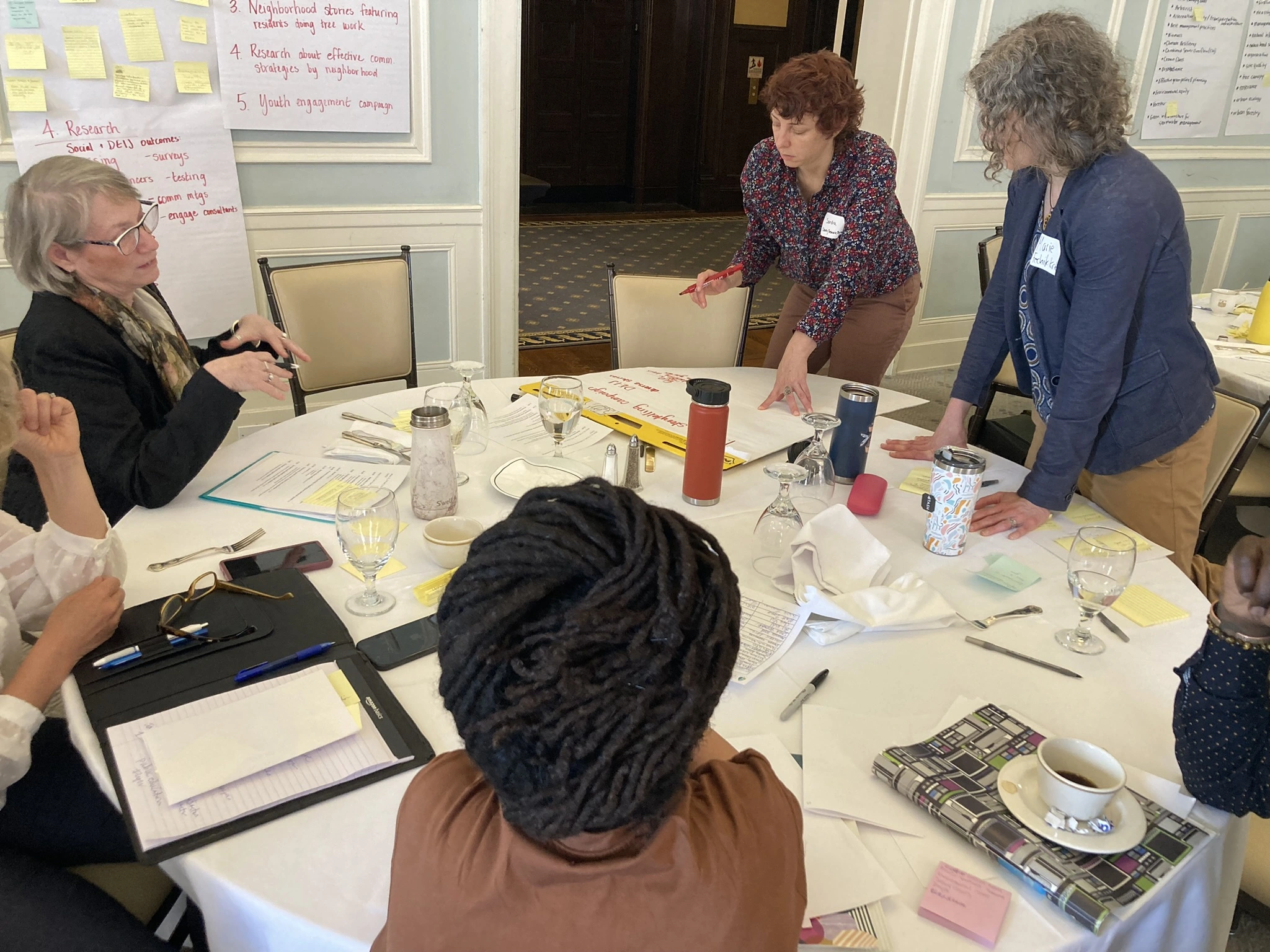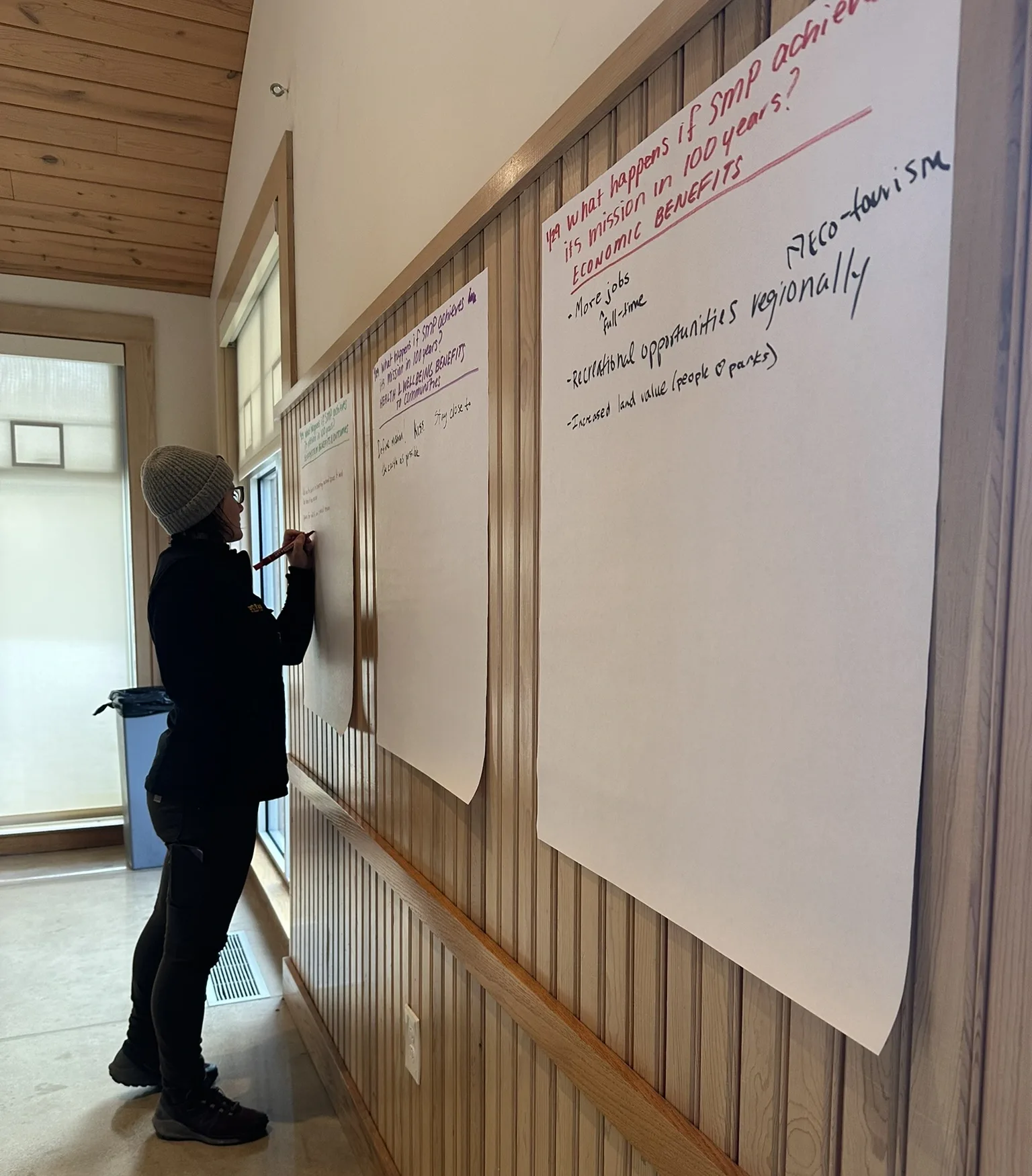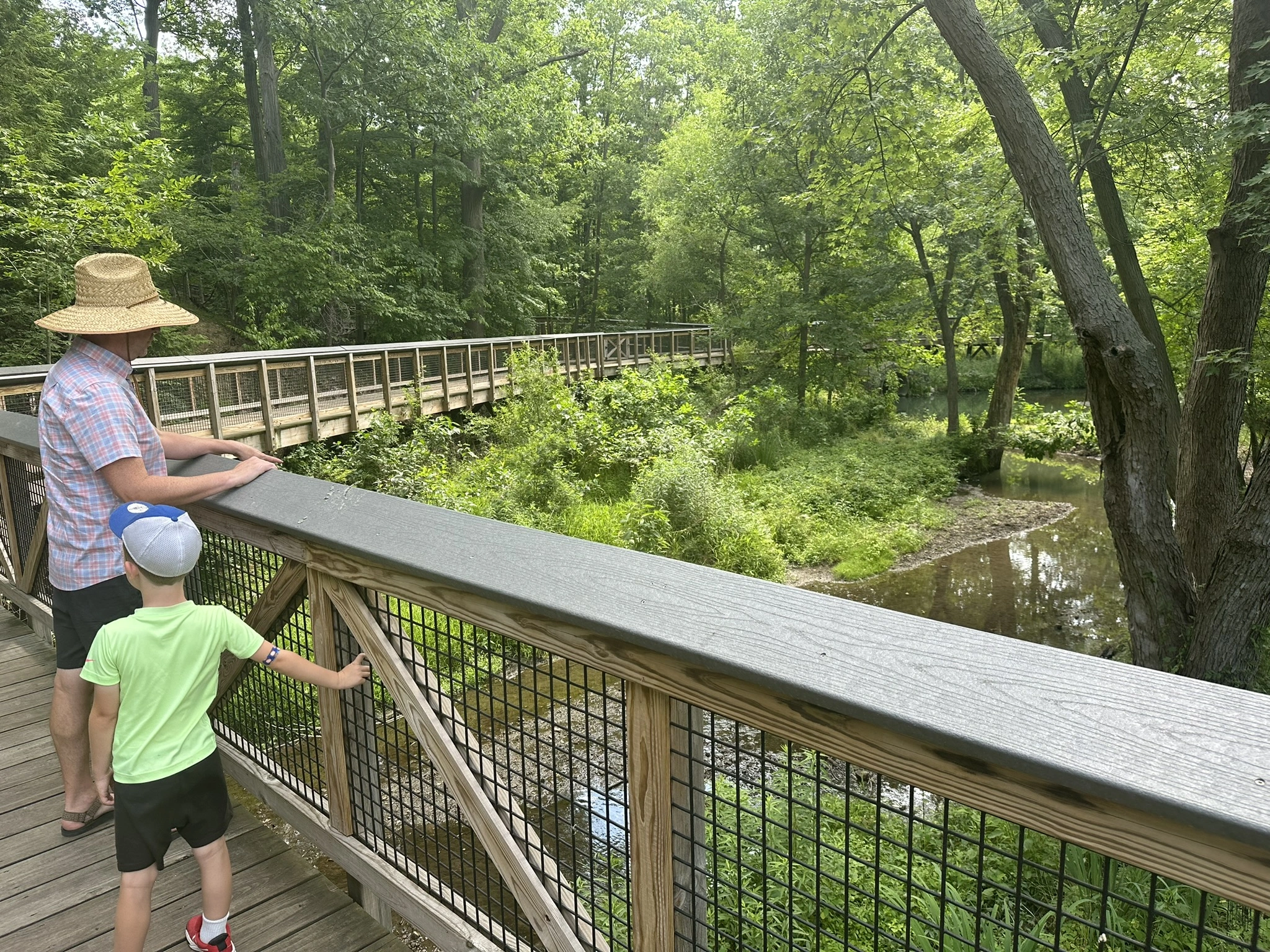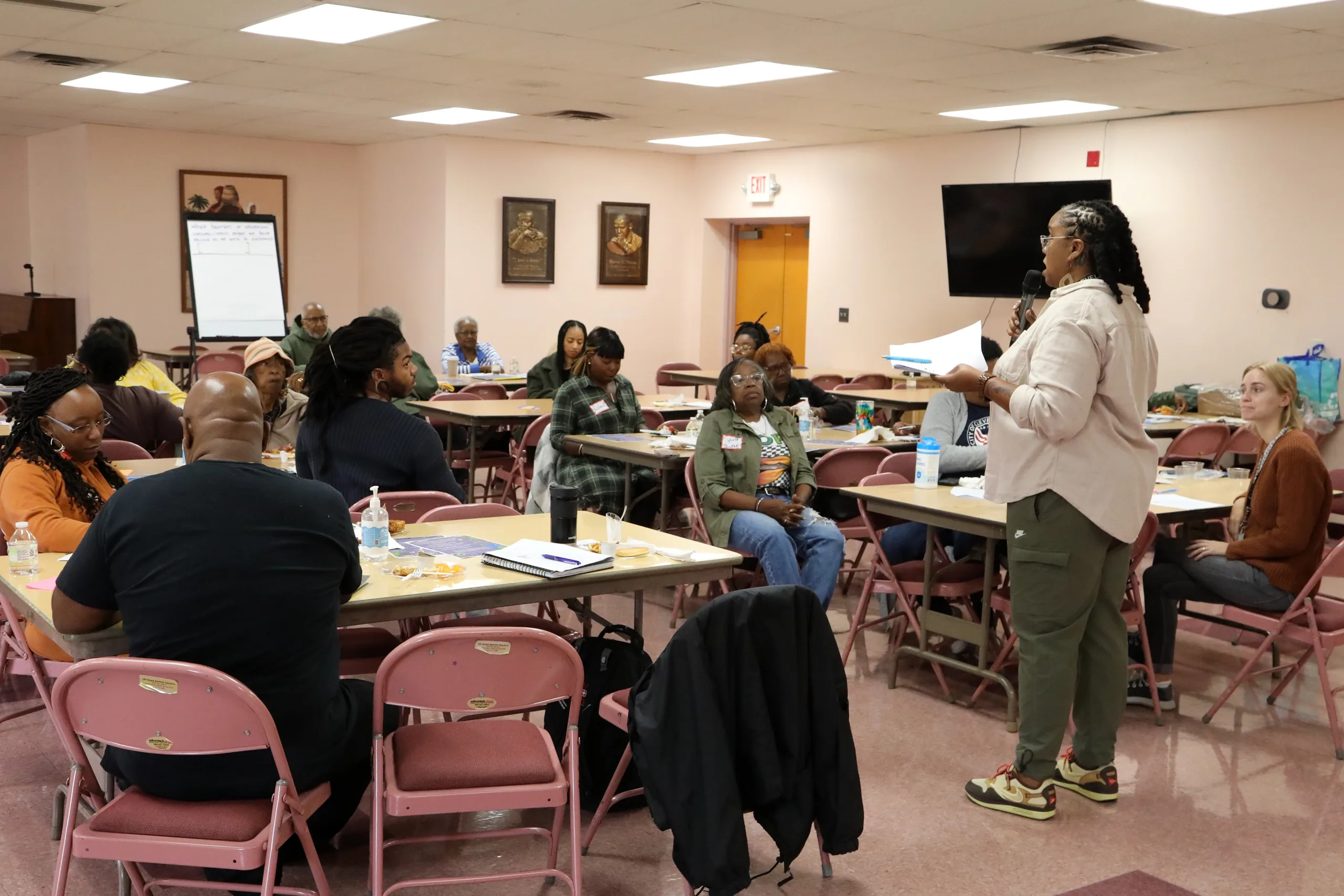
By Elizabeth Schuster, Environmental Economist
INTRODUCTION
I often come across “experts” who suggest there’s only one right way to do community engagement. To be honest, I’ve been there too; posting many blogs with tips for authentic community engagement.
Yet after almost two decades of facilitating community engagement, I’ve learned a big lesson that has me rethinking everything I know about community engagement. Here it is: No one can truly be an expert in all aspects of community engagement.
Every engagement process I’ve led has differed dramatically. We’re better off when we involve the communities themselves in the process – which helps address those differences in a more personalized way for that community.
Co-creation is the missing ingredient to ensure you are truly meeting people where they are. Co-creation is a collaborative approach where community partners have more direct input on the design and structure of the process as well as the outcomes. According to a presentation by the EPA on their Climate Pollution Reduction Grants, meaningful co-creation also means:
- People have an opportunity to participate in decisions about activities that may affect their environment and/or health
- Decision makers will seek out and facilitate the involvement of those potentially affected
Co-creation allows for a more adaptive & equitable process that reaches diverse and previously underrepresented communities.
In this blog I share two recent case studies with differing levels of approaches to co-creation. Refer to the last section for a list of 9 ways you can add more co-creation with communities to your next engagement process.
CASE STUDY 1: FARMER FOCUS GROUPS FOR AN ACADEMIC RESEARCH PROJECT
A couple of years ago, my team received a grant from Ohio State University to answer a question we heard from small-scale food producers: How can we access new markets and scale our growth?
This means the original research question was informed by an actual stated need of farmers.
We chose organizations in five Ohio counties, and each helped us host a focus group. Overall, the scheduling and organization of the sessions was simple. As self-employed individuals, they were available either 9-11 am or 1-3 pm, which made scheduling straightforward. We had $100 stipends available for each participant, which made recruitment easier.
While the project was a success and we collected useful information from all groups, it was not fully based on co-creation. Specifically, this means:
- We didn’t include farmers every step of the way. We had no funding identified for a phase 2, so we had no clear next steps on how the farmers could engage further in the future.
- We didn’t have a checklist of barriers to access. This means we weren’t explicitly co-creating solutions with our partner organizations to reduce barriers to participation.
CASE STUDY 2: CLIMATE ACTION PLAN COMMUNITY ROUNDTABLES FOR THE CITY OF CLEVELAND
We were retained by the City of Cleveland Mayor’s Office of Sustainability to facilitate community roundtables for the Climate Action Plan Update. The objective was to prioritize communities that were previously excluded or underrepresented. We were given an extensive list of accessibility considerations, encouraging us to think about everything from mobility issues to transportation to different language needs.
Instead of county-level partners, we chose neighborhood-level organizations that would have in-depth knowledge of the needs of their local communities. We were able to offer these community-based organizations (CBOs) a stipend. In this process, co-creation meant working with the CBOs to choose an accessible location, day of the week, time of day, and to design a set of incentives to encourage greater participation. In some cases, this meant providing lunch or dinner. In another case, it was recommended that we offer gift cards to a grocery store. In one case, it meant providing a Spanish interpreter. Choosing accessible locations meant hosting roundtables in a school gymnasium, two different churches, a grocery store parking lot, and at a farmers’ market.
We successfully completed the 6 roundtables in early September of this year. Some indicators of success include:
- We collected a total of 616 comments from roundtable participants
- Several participants said that had never been to a session like this before and never knew that their voice mattered
- Many participants noted that they would not have come if it were not for the personalized invitation from the CBO in their neighborhood
- We received a list of positive comments from the exit survey we completed, such as “great meeting,” “Very informative,” “Thank you for all your work,” and “Let’s work together.”
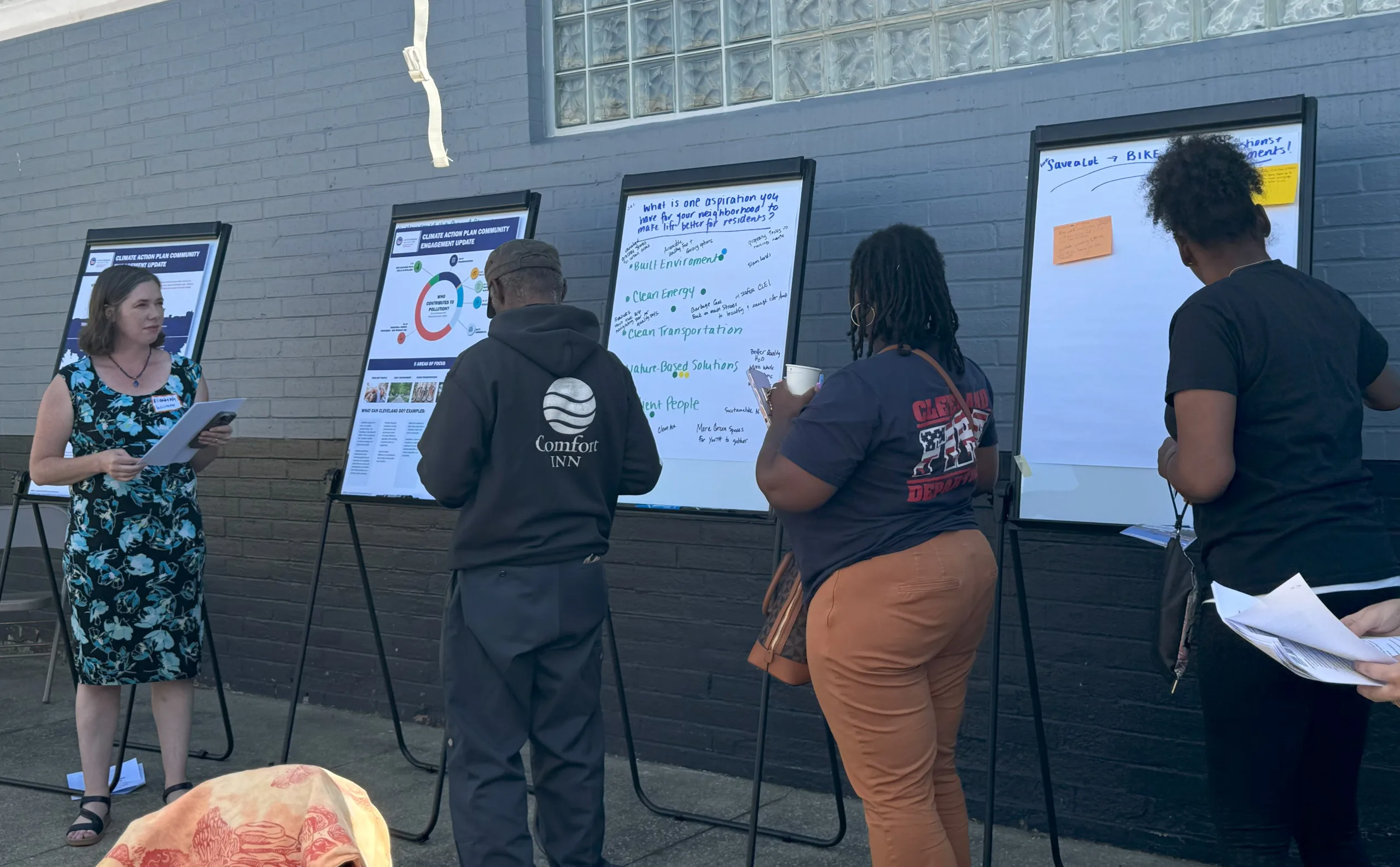
Photo: This roundtable took place at a grocery store in St. Clair-Superior neighborhood as a way to increase access for residents.
9 WAYS TO ADD MORE CO-CREATION WITH COMMUNITIES TO YOUR NEXT ENGAGEMENT PROCESS
Designing community engagement processes that reflect and respect diverse community needs starts with co-creation. Here are nine tips to get you started.
Tip one: Ask your community partners, where do you want to be involved in the process? It can help clarify roles and expectations if you ask this question directly from the start.
Tip two: If you are leveraging the community engagement for research, engage the community early in the process, while you are still identifying a research question. This helps ensure the research is designed to meet actual community needs.
Tip three: Involve the community in selecting an accessible location where to host the session. Really think outside-of-the box about where people are already showing up and spending time.
Tip four: Have the community involved in promoting the event. If the invitations are by word-of-mouth only, you risk only having the same participants show up that always show up. Find multiple formats for promotion to reach more diverse audiences.
Tip five: Get input from your CBO partner on the structure and format of the session. This helps ensure the session is designed in a way that is accessible. This also can help with identifying where you might be using too much jargon in your messaging and questions.
Tip six: Have your community partners help in co-hosting the event. This can help build trust and make their community feel comfortable when they show up and see a familiar face.
Tip seven: Ensure you are following through and finding ways to incorporate the feedback in your decision making.
Tip eight: Co-creation also is not a one-time event. Find opportunities to continue ongoing engagement into the future.
Tip nine: When possible, find ways to compensate your community partners – and the participants as well. Especially when dealing with constrained budgets, get input from your CBO on appropriate incentives or compensation that show gratitude to communities for their time.
CONCLUSION
Community engagement is more effective when done in teams. The ability to tap into community knowledge creates more inclusive and accessible engagement processes. As my colleague Rebecca White, recently commented, “Show people you value their input by creating a place that matches where and how they show up.”

